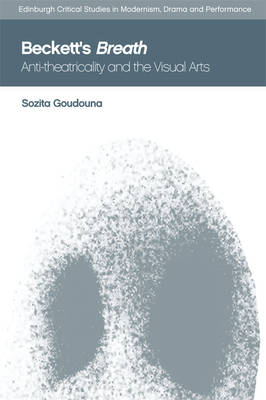
- Afhalen na 1 uur in een winkel met voorraad
- Gratis thuislevering in België vanaf € 30
- Ruim aanbod met 7 miljoen producten
- Afhalen na 1 uur in een winkel met voorraad
- Gratis thuislevering in België vanaf € 30
- Ruim aanbod met 7 miljoen producten
Omschrijving
Examines the intersection of Samuel Beckett's thirty-second playlet Breath with the visual arts
Samuel Beckett, one of the most prominent playwrights of the twentieth century, wrote a thirty-second playlet for the stage that does not include actors, text, characters or drama but only stage directions. Breath (1969) is the focus and the only theatrical text examined in this study, which demonstrates how the piece became emblematic of the interdisciplinary exchanges that occur in Beckett's later writings, and of the cross-fertilisation of the theatre with the visual arts. The book attends to fifty breath-related artworks (including sculpture, painting, new media, sound art, performance art) and contextualises Beckett's Breath within the intermedial and high-modernist discourse thereby contributing to the expanding field of intermedial Beckett criticism.
Key Features
Examines Beckett's ultimate venture to define the borders between a theatrical performance and purely visual representationJuxtaposes Beckett's Breath with breath-related artworks by prominent visual artists who investigate the far-reaching potential of the representation of respiration by challenging modernist essentialismThe focus on this primary human physiological function and its relation to arts and culture is highly pertinent to studies of human performance, the nature of embodiment and its relation to cultural expressionFacilitates new intermedial discourses around the nature and aesthetic possibilities of breath, the minimum condition of existence, at the interface between the visual arts and performance practices and their relation to questions of spectacle, objecthood and materiality
Specificaties
Betrokkenen
- Auteur(s):
- Uitgeverij:
Inhoud
- Aantal bladzijden:
- 232
- Taal:
- Engels
- Reeks:
Eigenschappen
- Productcode (EAN):
- 9781474452700
- Verschijningsdatum:
- 7/08/2019
- Uitvoering:
- Paperback
- Formaat:
- Trade paperback (VS)
- Afmetingen:
- 155 mm x 229 mm
- Gewicht:
- 317 g

Alleen bij Standaard Boekhandel
Beoordelingen
We publiceren alleen reviews die voldoen aan de voorwaarden voor reviews. Bekijk onze voorwaarden voor reviews.











